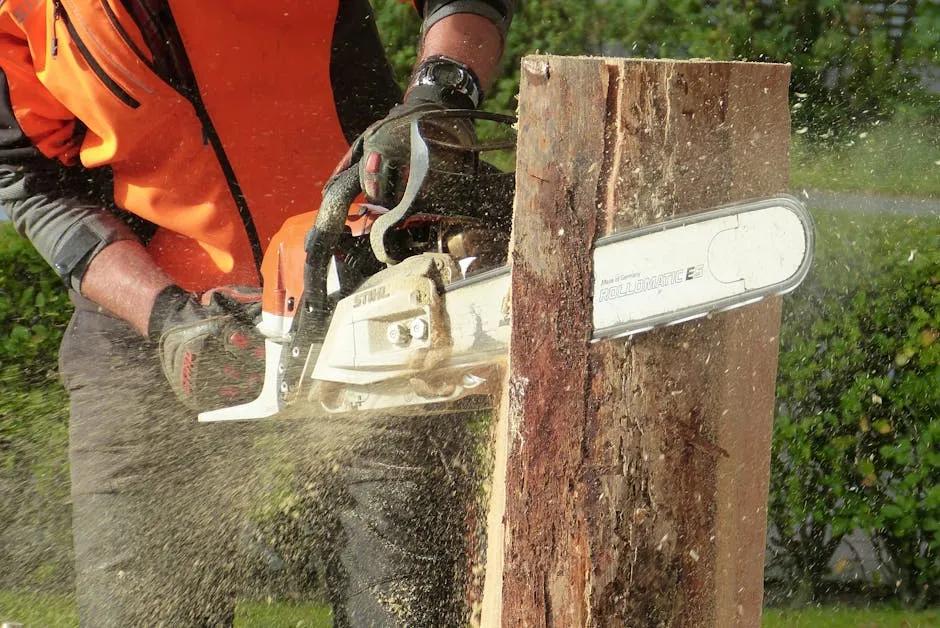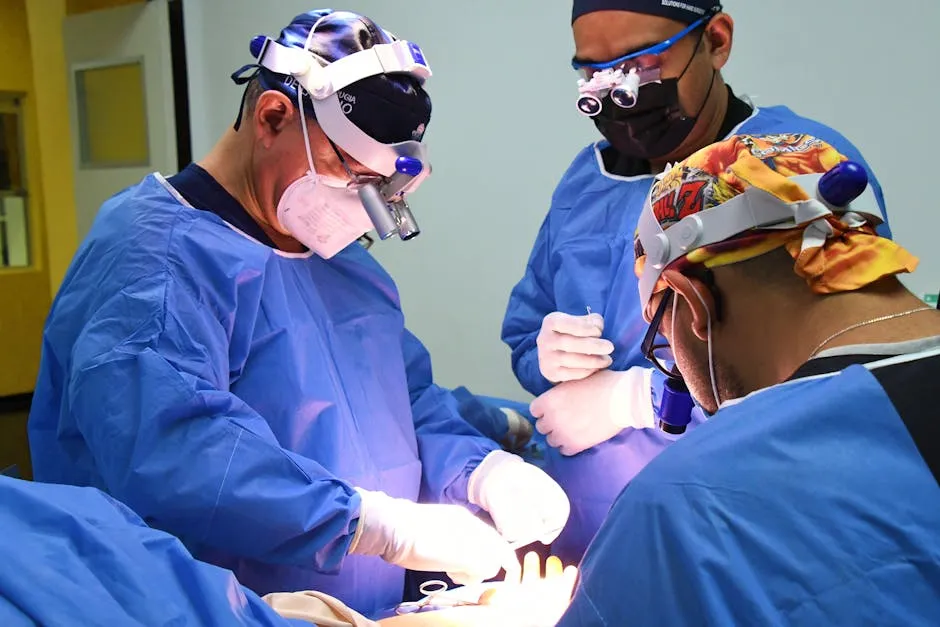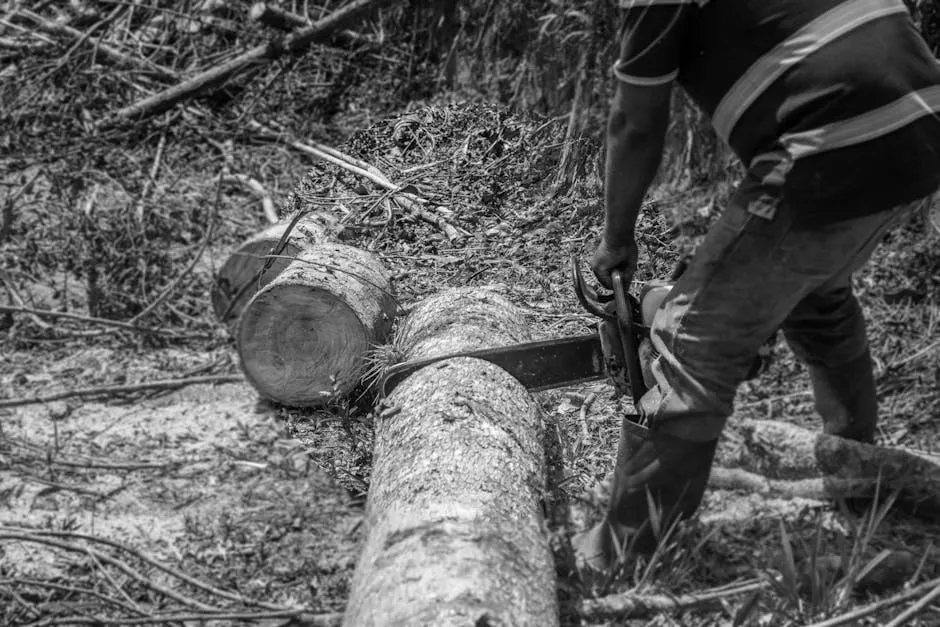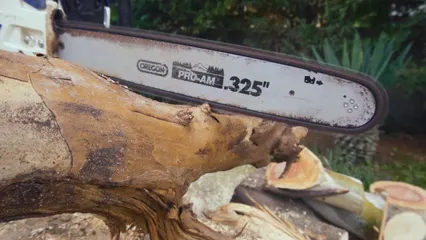
Why Was the Chainsaw Invented? The Surprising History Behind the Tool
Introduction
The chainsaw is a familiar tool today, used mainly for lumber and landscaping. However, its origins are surprisingly rooted in medical history. This post uncovers how the chainsaw was first invented to assist in childbirth. Join us as we explore its fascinating evolution from a surgical instrument to a crucial forestry tool.
Summary and Overview
Originally, the chainsaw served a medical purpose, designed to help with difficult childbirth. Scottish doctors John Aitken and James Jeffray created it in the late 18th century. They aimed to facilitate a procedure known as symphysiotomy, which widened the pubic joint to aid delivery.
At that time, childbirth was perilous, with many women facing severe complications. The chainsaw allowed for quicker and more precise removal of pelvic bone, ultimately saving lives. Over time, as medical practices advanced, the chainsaw transitioned to the timber industry, where it became an essential tool for logging and woodworking. This shift highlights the intertwined history of medicine and technology, reshaping our understanding of both childbirth and surgical practices.

Now, if you’re thinking about keeping your chainsaw in top-notch condition, you might want to consider investing in some Chainsaw Chain Oil. Keeping your chain well-lubricated not only extends its life but also ensures that you’re not left with a dull blade when you need it most—like during a lumberjack competition or an impromptu tree-trimming session!
The evolution of the chainsaw from a medical tool to a logging instrument is fascinating. You can read more about this transformation in why were chainsaws invented.
The Historical Context of Childbirth
Life and Death in Childbirth
Childbirth has always been a risky endeavor. Before modern medical advancements, maternal mortality rates were alarmingly high. In the 18th century, one in every 100 mothers died during childbirth. Many women faced severe complications without access to effective surgical interventions or anesthesia.
Complications during labor often led to tragic outcomes. Doctors had limited options, typically resorting to drastic measures. Some methods included craniotomy, where the baby’s skull was fractured to aid delivery, or caesarean sections, which posed significant risks.
The dire circumstances surrounding childbirth demanded innovative solutions. As a result, medical professionals sought ways to reduce the dangers faced by mothers. The quest for safer childbirth ultimately led to the invention of the chainsaw, a tool that would change the landscape of obstetrics.

The Need for Medical Innovations
As childbirth complications persisted, the need for medical innovation grew. Obstructed labor was a common problem, forcing doctors to find solutions that could save lives. One such method was symphysiotomy, which aimed to alleviate pressure by widening the pelvic opening.
This procedure was often messy and painful, as it involved cutting through bone and cartilage. The chainsaw, with its rotating blade, emerged as a more effective alternative. It allowed for cleaner cuts and reduced trauma to surrounding tissues.
John Aitken and James Jeffray’s invention marked a turning point in surgical practices. Their flexible chainsaw offered a way to perform symphysiotomies more swiftly and with fewer complications. This innovation laid the groundwork for future advancements in both childbirth and surgical techniques.
If you’re intrigued by the medical history of surgical instruments, you might enjoy reading a Medical History Book that dives deeper into how tools have evolved in the medical field.
The Invention of the Chainsaw
Early Prototypes and Their Purpose
In the late 18th century, two Scottish doctors, John Aitken and James Jeffray, invented the first chainsaw. This early version was not the powerful tool we know today, but a hand-cranked device designed for surgical use. Its main purpose was to perform symphysiotomies and excise diseased bone.
The chainsaw featured a flexible, serrated chain that allowed surgeons to make precise cuts. During difficult childbirth, a baby could become stuck in the birth canal. Traditional methods were often brutal and time-consuming. Aitken and Jeffray’s invention aimed to improve this process, making it faster and less traumatic for mothers.

The chainsaw allowed doctors to widen the pelvic opening by cutting through bone and cartilage. This innovation significantly reduced the time spent on the procedure, ultimately saving lives. Despite its terrifying reputation today, the chainsaw was a breakthrough in obstetric surgery.
The Role of Anesthesia
The development of anesthesia changed surgical practices dramatically. Before its introduction in the mid-19th century, surgeries were performed without any pain relief. This made procedures like symphysiotomy incredibly distressing for mothers.
Anesthesia became widely used around 1846, allowing for safer and more humane surgical interventions. The chainsaw’s invention coincided with the growing need for less invasive tools. As medical techniques evolved, the chainsaw found new applications beyond childbirth.
While it initially served as a lifesaving device, the chainsaw eventually transitioned into the timber industry. Its design and functionality laid the groundwork for modern chainsaws, further demonstrating the link between medical innovation and everyday tools.
Evolution into a Lumber Tool
Transition to Woodworking
As medical techniques evolved, the chainsaw’s utility expanded beyond surgery. By the 19th century, it began to attract attention for logging purposes. The first notable patents for chainsaw designs aimed at cutting wood emerged during this period.
In 1883, Frederick L. Magaw patented an “endless chain saw” designed for producing wooden boards. This marked the beginning of chainsaws in the timber industry. However, the true breakthrough came in 1918 when Canadian inventor James Shand patented the first portable chainsaw. His design allowed for easier mobility and operation, revolutionizing how lumberjacks approached their work.

These innovations paved the way for chainsaws to become essential tools in forestry. No longer limited to surgical applications, chainsaws were now seen as powerful instruments capable of efficiently felling trees and processing timber.
And if you’re gearing up for some serious lumberjack work, don’t forget to grab your Chainsaw Safety Gear. It’s not just about looking good in flannel; it’s about keeping those limbs intact!
Advancements in Chainsaw Technology
The evolution of chainsaw technology saw significant advancements throughout the early 20th century. Electric and gasoline-powered models emerged, transforming the timber industry. In 1926, Andreas Stihl patented the first electric chainsaw, followed by a gasoline version just three years later.
These saws were initially large and required two operators. However, advancements in materials, like lightweight aluminum, allowed for more compact models. By the 1950s, chainsaws became light enough for a single person to operate, increasing efficiency and safety in the field.
Modern chainsaws now boast improved power, safety features, and ergonomics. This evolution not only enhanced productivity but also ensured safer working conditions for lumberjacks. With the chainsaw’s integration into the timber industry, it became a staple tool, changing the landscape of logging forever.

The Impact of Chainsaws on Surgery and Timber Industries
Successes and Challenges in Surgery
Chainsaws had a profound impact on surgical practices, particularly in obstetrics. Initially, these tools improved surgical outcomes significantly. They allowed doctors to perform symphysiotomies more efficiently, reducing the risks associated with obstructed labor.
However, as medical practices advanced, the use of chainsaws in surgery declined. Concerns over safety and the development of more effective techniques, like cesarean sections, led to their eventual phasing out. Ethical implications also arose regarding the use of such tools in sensitive procedures.
While chainsaws were once seen as lifesaving devices, their association with past surgical practices raises questions about the evolution of medical ethics. Understanding their role in surgery helps contextualize the ongoing dialogue about medical innovation and patient care.

Chainsaws in Modern Forestry
Today, chainsaws are integral to modern forestry practices. They streamline logging operations, making tree felling and processing faster and more efficient. However, their widespread use has led to safety concerns.
Statistics reveal that chainsaw-related injuries are common, with thousands requiring hospital treatment each year. As a result, safety measures have become crucial. Proper training, protective gear, and adherence to safety protocols are now essential in mitigating risks associated with chainsaw operation.
Awareness of these safety measures is vital for anyone working with chainsaws. By emphasizing safety and responsible usage, we can enjoy the benefits of this powerful tool while minimizing the risks involved. If you’re looking to be prepared for any mishaps, consider keeping an Emergency Medical Kit handy!
Cultural Perceptions and Misconceptions
The Chainsaw in Popular Culture
Chainsaws have a unique reputation in popular culture. Movies often depict them as instruments of horror. A notable example is The Texas Chainsaw Massacre. This 1974 film turned the chainsaw into a symbol of terror. Many associate it with violence and fear, leading to misconceptions about its purpose.
Historically, chainsaws were invented for medical use, specifically during childbirth. Yet, modern media often ignores this context. Instead, it amplifies their role as tools for destruction. This portrayal shapes societal perceptions. Chainsaws are less about utility and more about fear.

Society’s view of chainsaws reflects broader themes. They symbolize the clash between technology and nature. While they can be seen as helpful tools, their representation in media often leans toward the sinister. This duality complicates our understanding of chainsaws and their true purpose.
Misunderstandings About Their Origins
Many people misunderstand the origins of chainsaws. The common belief is that they were created solely for cutting wood. However, this is far from the truth. The chainsaw’s invention emerged from a need in medicine.
Scottish doctors John Aitken and James Jeffray designed the first chainsaw in the late 18th century. Their goal was to assist in symphysiotomy, a surgical procedure during difficult childbirth. This device helped widen the birth canal, making delivery safer for mothers and babies.
Misconceptions often arise from the dramatic portrayal of chainsaws in media. The reality is that they were once life-saving medical tools. Over time, as surgical practices evolved, their function shifted toward forestry. Understanding this history reveals how chainsaws transitioned from operating rooms to lumberyards.
This narrative reminds us that tools can have diverse purposes. Chainsaws are not merely instruments of horror but have a rich history rooted in medical innovation. Recognizing their origins helps reshape our perceptions of these powerful machines.

Conclusion
The chainsaw’s journey from a surgical tool to a forestry essential is nothing short of remarkable. Originally designed by John Aitken and James Jeffray, this device aimed to assist in childbirth by performing symphysiotomies. Today, we see chainsaws as vital equipment in logging and landscaping. Understanding this transformation reshapes our perception of both childbirth and surgical innovation. It highlights the lengths to which early medical practitioners went to save lives and reminds us of the complex relationship between medical advancements and their unexpected applications in everyday life.
What is a symphysiotomy, and how was it performed?
A symphysiotomy is a surgical procedure that widens the pubic symphysis joint. Doctors performed it to create more space for childbirth when complications arose. Historically, this procedure involved cutting through bone and cartilage without anesthesia, making it quite painful and risky for mothers.
How did the chainsaw evolve from a medical tool to a lumber tool?
The chainsaw transitioned when inventors recognized its potential for cutting wood. After its medical use, chainsaw designs adapted for logging emerged in the late 19th century. Key innovations, such as portable models, paved the way for its widespread application in forestry.
What were the risks associated with using chainsaws in childbirth?
Using chainsaws in childbirth posed significant risks. Complications could include excessive blood loss, infection, and damage to surrounding tissues. Additionally, the lack of anesthesia meant mothers experienced great pain during these procedures, raising ethical concerns about their use.
Are chainsaws still used in any medical procedures today?
While chainsaws are no longer common in medical settings, some modern surgical tools have evolved from their design. Today, instruments like the Gigli saw offer similar benefits with improved safety and effectiveness, used primarily for bone surgeries.
What safety measures are in place for modern chainsaw use?
Modern chainsaws come with various safety features, including chain brakes and protective gear requirements. Proper training and adherence to safety protocols significantly reduce injury risks. Statistics show that thousands require treatment for chainsaw-related injuries each year, emphasizing the importance of safety.
How has the portrayal of chainsaws in media influenced public perception?
Chainsaws often appear in horror films, leading to a skewed perception of their purpose. This portrayal emphasizes danger and violence, overshadowing their practical uses in forestry and medicine. Understanding their origins helps clarify their true purpose beyond entertainment.
What are some modern uses of chainsaws outside of logging?
Chainsaws have diverse applications, including artistic endeavors like chainsaw carving, construction tasks, and emergency services for disaster recovery. Their versatility showcases how this tool has adapted over time to meet various needs beyond its original purpose.
Please let us know what you think about our content by leaving a comment down below!
Thank you for reading till here 🙂
All images from Pexels




